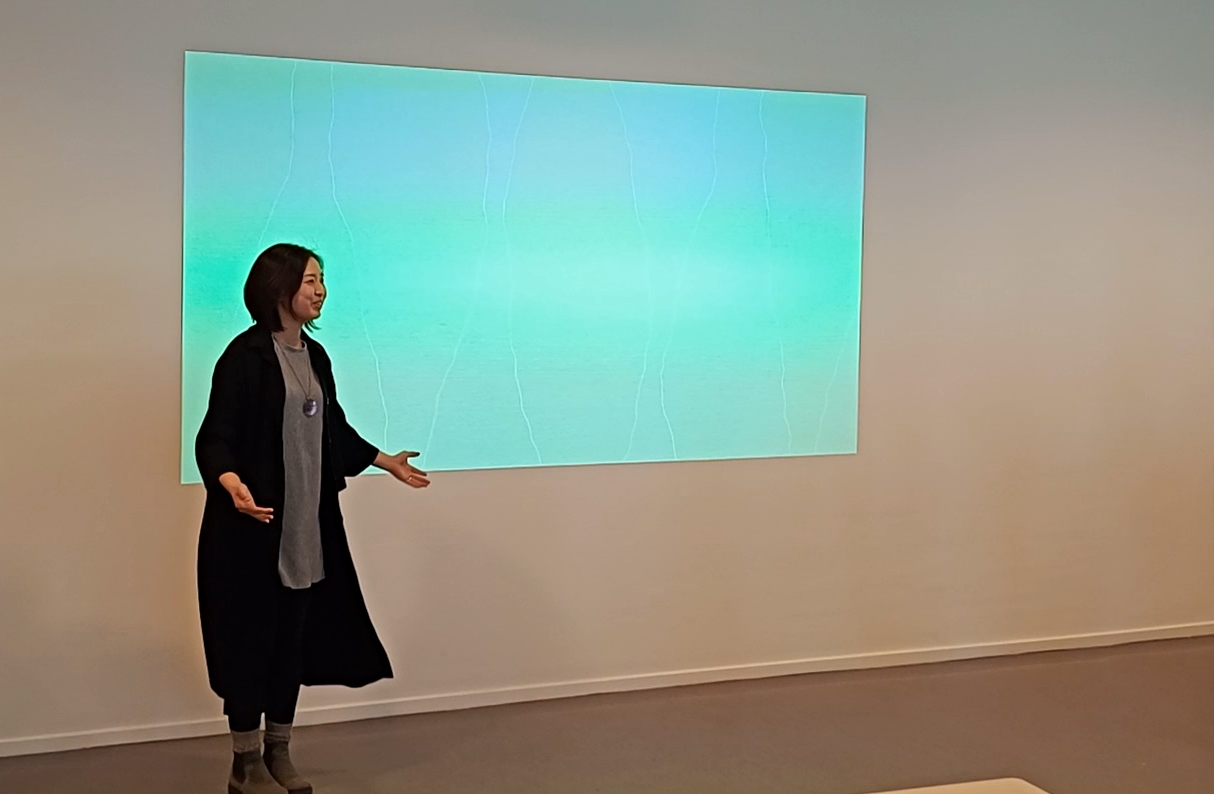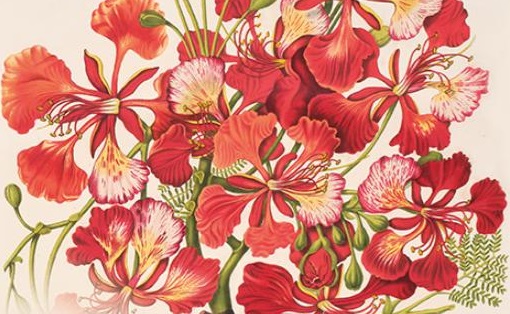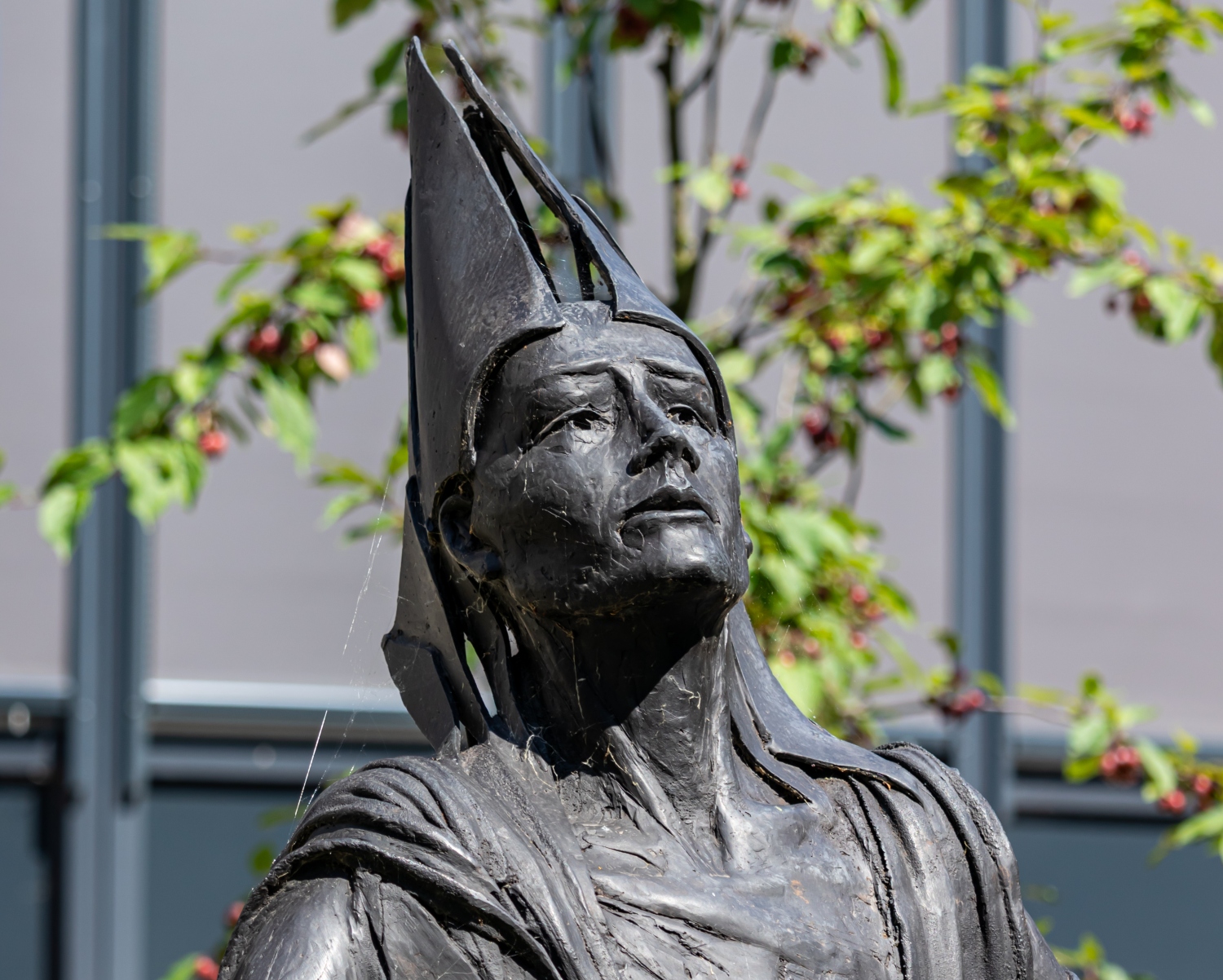The artwork is a wall projection of moving waves. It should remind us ‘that there is still a long way to go to achieve inclusion and decolonisation at WUR’, according to the artist. Because she believes we can only achieve this collectively, everyone can participate in this artwork by answering a questionnaire (see the QR code at the bottom). The work will be updated every month.
The artwork is a moving image of waves projected on the wall that separates the canteen from room C64. These waves are generated from the input of contributors, ‘Your answers determine the shape, the colours and the brightness of the wave,’ Hung explains. ‘But the colour is also influenced by the answer before you. So, it is all connected, like we are at WUR.’
The art is called W(E)AVING, a reference to the words ‘waving’ and ‘weaving’. Each wave represents a participant. Participants help to push the waves forward by adding their own waves to the work. Hung: ‘All those waves together compose the moving image. It is like the relationships we build with each other. All those connections, or lines, weave into a surface that makes the WUR community.’
The artwork is what one might call relational art. Hung: ‘When I came to the Netherlands ten years ago, I was a bit lost in finding ways to communicate with people. But through art, I found my voice. Art allows dialogue to happen. The idea of this relational art is that not only the result is the art, but also the process of making it and experiencing it is art.’
DARE
The art piece was initiated by DARE, a project focused on tackling and minimising racism. After three years, the project comes to an end. The art reveal was preceded by a panel discussion about the work of DARE. Percy Cicilia Jr, moderator of this discussion and ex-project leader of DARE, shares a personal story: ‘It was in this very room, in that orange chair, thirteen years ago. Somebody made this racist comment, ‘Finally, we have a negro in class’. Back then, this was even more accepted than the non-binary pronouns are right now. The work is far from done.’
Work continues
‘The project comes to an end, but the work doesn’t’, says Joyce van der Velde, one of the DARE project managers. Van de Velde continues: ‘Well, one way of continuing this topic is through art, a different means than we have done before during this project.’ DARE and the Social Sciences Group formed an art committee. The committee concluded: ‘It addresses decolonisation and inclusion by showing connections that we all share, and by deconstructing the identity we are sometimes given’.


 Artist Yi-Ling Hung and her artwork W(E)AVING. Photo Steven Snijders
Artist Yi-Ling Hung and her artwork W(E)AVING. Photo Steven Snijders 

